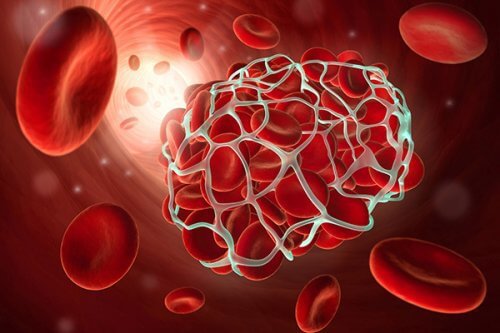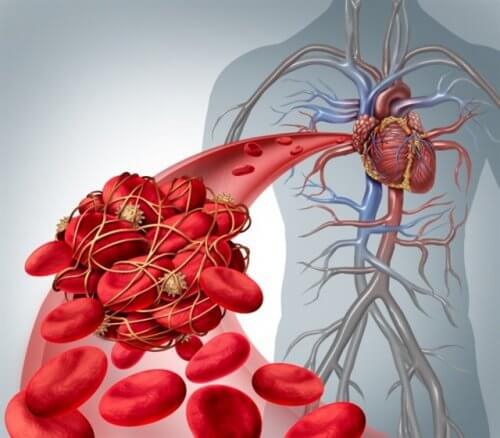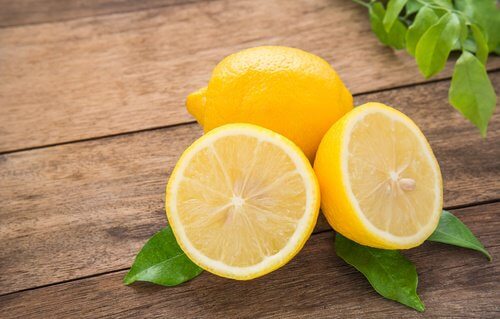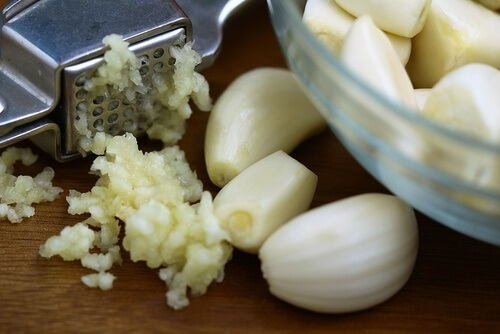Nine Foods that May Help Reduce Your Risk of Thrombosis and Stroke


Written and verified by the doctor Nelton Abdon Ramos Rojas
Thrombosis and stroke can cause death. While thrombosis originates in the veins and arteries, an embolism is the actual migration of a blood clot through the circulatory system. This is a risk that many people suffer from, especially those who have varicose veins.
What can you do to reduce your risk of this serious problem? It’s clear that you can’t avoid these conditions 100%, but you can reduce your probability of suffering from them by leading a healthier lifestyle.
Read more here: 6 Tips to Help You Prevent a Stroke
Changing your lifestyle habits is something that’s well within your reach. If you happen to have a genetic predisposition to thrombosis of any kind, it’s time to take care of yourself, think critically about your diet, and lead a more active life.
Today, we want to talk to you about thrombosis and stroke and suggest some wonderful foods you should be including in your diet that may help reduce your risk of these conditions.
Why thrombosis and embolisms occur

There is no single reason why they manifest. These conditions are based on a variety of factors that usually relate to your lifestyle, genetic factors, and other associated diseases.
- Having high cholesterol and triglyceride levels.
- Spending a lot of time sitting down.
- Taking birth control pills or estrogen hormones (especially in women who smoke).
- Recently having any kind of surgery.
- Pregnancy.
- Obesity.
- Heart or kidney problems.
- Genetic predisposition.
As you can see, a lot of these risk factors can’t be avoided. But just because you’re pregnant or have high cholesterol doesn’t mean that you’re going to suffer from a blood clot.
Discover: How to Lower Bad Cholesterol at Home
Let’s find out exactly how thrombosis differs from an embolism:
- Thrombosis: The accumulation of blood in a vein or artery due to clotting, the alteration of a blood vessel, or the rupture of an arterial wall.
- Embolism: This can result from thrombosis or from the build-up of fat, amniotic fluids, or even carbon dioxide bubbles (in the case of scuba divers or people who practice free diving).
- An embolism is the obstruction of an artery in any part of the body, such as the lungs, for example.
What foods can help reduce your risk of thrombosis and stroke?
 1. Lemon
1. Lemon
We’ve told you about the benefits of lemons countless times. You’re well aware of the fact that they may help strengthen your immune system, eliminate toxins, and fight the effects of free radicals.
- But did you know that lemons can be very powerful when it comes to improving circulation and increasing your production of red blood cells?
Don’t miss a day of drinking water with lemon juice or adding a little bit of this juice to your salad dressings.
2. Olive oil
- Extra virgin olive oil is a natural gift that’s rich in omega-6 fatty acids and is ideal for reducing bad cholesterol (LDL) levels in the bloodstream.
- Thanks to olive oil, you can keep your arteries flexible and reduce the build-up of plaque, which can hinder blood flow and elevate your risk of thrombosis.
3. Avocado may reduce your risk of thrombosis and stroke
- Avocados, when consumed in moderation, aren’t fattening and are as healthy as or even more so than olive oil itself.
- Try enjoying half of an avocado three times a week with your breakfast.
4. A garlic clove a day

- Eat at least one garlic clove a day.
- Garlic is rich in allicin, a medicinal enzyme that cares for the health of your heart, your immune system, and also has an anti-coagulant effect to keep blood flowing.
5. Artichokes
- Include a cooked artichoke with a little vinegar, olive oil, and lemon juice in your dining plan. It’s more than just a healthy choice – it’s amazing!
This vegetable is one of the best choices for helping reduce your risk of thrombosis and embolisms.
6. Celery
Celery is packed with antioxidants, vitamins, and phyto elements that regulate your blood pressure.
- This vegetable may also reduce your blood cortisol levels. This is a stress hormone that can have a very negative impact on your cardiovascular health.
- If you consume celery on a regular basis, either raw or in juices, you may enjoy cleaner, more flexible arteries with less plaque.
7. Cranberry juice
- One of the best natural options for improving circulation is cranberry.
- This fruit may improve your circulation thanks to its anti-coagulant effects.
Drink cranberry juice and buy them dried or even frozen if they’re out of season.
8. Red wine

Drinking one glass of red wine a day may reduce your risk of having a heart attack or stroke.
- This grape-based beverage is rich in powerful antioxidants, as well as ethanol, which may help regulate your bad cholesterol levels.
- Red wine may also delay the formation of plaque in your arteries and improve your circulation.
9. Carrots
- Everybody loves carrots. They’re refreshing, easy on the palate, and go with everything. They’re also excellent to reduce your risk of thrombosis and stroke.
- This is because they’re a great source of beta-carotene, a substance that may help balance your cholesterol levels.
You should definitely increase your consumption of these nine foods from now on. Your heart will thank you for it!
All cited sources were thoroughly reviewed by our team to ensure their quality, reliability, currency, and validity. The bibliography of this article was considered reliable and of academic or scientific accuracy.
- Stanford Health Care. Causes of Thrombosis.
https://stanfordhealthcare.org/medical-conditions/cancer/thrombosis/thrombosis-causes.html">https://stanfordhealthcare.org/medical-conditions/cancer/thrombosis/thrombosis-causes.html</a>
- Personal de Clínica Mayo. Trombosis venosa profunda (TVP)
https://www.mayoclinic.org/es-es/diseases-conditions/deep-vein-thrombosis/symptoms-causes/syc-20352557">https://www.mayoclinic.org/es-es/diseases-conditions/deep-vein-thrombosis/symptoms-causes/syc-20352557</a>
- Deep vein thrombosis (Trombosis venosa profunda). Instituto Nacional del Corazón, los Pulmones y la Sangre (National Heart, Lung, and Blood Institute).
https://www.nhlbi.nih.gov/health-topics/venous-thromboembolism">https://www.nhlbi.nih.gov/health-topics/venous-thromboembolism</a>
- Micallef M. Lexis L. Lewandowski P. licensee BioMed Central Ltd. 2007. Red wine consumption increases antioxidant status and decreases oxidative stress in the circulation of both young and old humans. Nutrition Journal.
https://nutritionj.biomedcentral.com/articles/10.1186/1475-2891-6-27">https://nutritionj.biomedcentral.com/articles/10.1186/1475-2891-6-27</a>
- Lawenda B. IntegrativeOncology-Essentials. Reduce Your Risk Of Blood Clots Without A Prescription. (2013).
https://integrativeoncology-essentials.com/2013/03/reduce-your-risk-of-blood-clots-without-a-prescription/">https://integrativeoncology-essentials.com/2013/03/reduce-your-risk-of-blood-clots-without-a-prescription/</a>
This text is provided for informational purposes only and does not replace consultation with a professional. If in doubt, consult your specialist.








